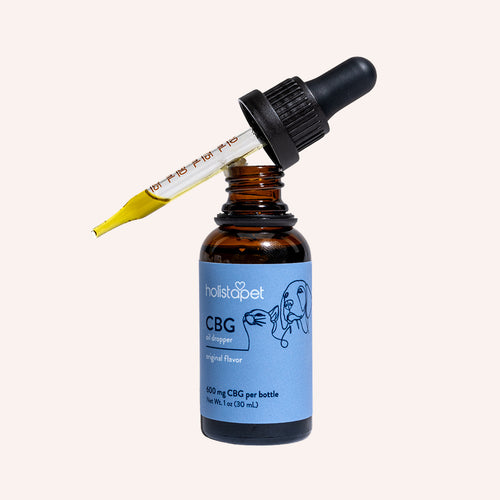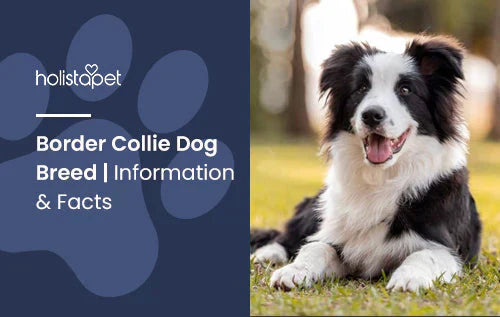The Toy Fox Terrier is a true all-American breed that will make you laugh with their rambunctious and bubbly personalities. Most Terriers are known for their ability to hunt small game, but the Toy Fox Terrier became popular for their talents in traveling circuses and dog shows. They're very easy to train and are commonly found in many trials and dog sports today.
Toy Fox Terriers were prized for their ability to hunt rats in the early 20th century but have since become popular household pets. Today, they make the perfect house companions and cuddle buddies. Read on to learn more about this awesome breed.
Toy Fox Terrier Characteristics (Physical)
Toy Fox Terriers are a "toy breed" because they were specifically bred to be a smaller version of another dog breed. Their closest relative is the Smooth Fox Terrier, bred with a mix of Chihuahuas, Miniature Pinschers, Manchester Terriers, and even an Italian Greyhound. Their compact sizes make them great for apartments or small houses.
This breed has a small, athletic build perfect for hunting rats. Their bodies are quick and agile, allowing them to hunt not only rats but also perform acrobatic tricks and flips. They also have pointed ears that stand tall and ready to hear the slightest sound.
Toy Fox Terriers have prominent, dark brown eyes that are always scanning their environments. They have round heads with long muzzles. All Toy Fox Terriers have black noses, except for the chocolate-colored variety, which have brown noses.
With just short to medium-length tails, the Toy Fox Terrier may make some breeders dock the tail at around three-fifths of its length. The practice of docking is meant to prevent injury, especially for active breeds with short coats that do not protect their tails. However, this practice is illegal in most parts of Europe.
Toy Fox Terriers have decent life spans at around 13-15 years. Generally, smaller breeds live longer than larger breeds because they tend to mature at a slower pace.
Toy Fox Terrier Dog Breed Size
Toy Fox Terriers are a tiny dog breed and stand only 8-12 inches tall. They also weigh very little and can be anywhere from 3.5-7 pounds. Males may be slightly larger than females, but the difference is not very noticeable.
Toy Fox Terrier Dog Breed Personality
The best way to describe the Toy Fox Terrier is fiercely loyal, naturally intelligent, and lovably affectionate. Despite their small statures, they are very loud and spunky and do not back down from anyone. They love to be around their families and will always demand your attention.
Toy Fox Terriers are always exploring, digging, barking, and running around as a high-energy breed. They look for constant stimulation and become destructive when bored. Toy Fox Terriers are very attached to their families and should not be left alone for too long as they are prone to separation anxiety. For Dogs who suffer from anxiety can be given Best CBD Dog treats for anxiety
Their natural intelligence carries over to obedience rallies or dog sports and competitions. There are several Toy Fox Terrier champions in multiple dog sports, and they have a history of performing acrobatic tricks in traveling circuses.
The Toy Fox Terrier have protective personalities, armed with a never-back-down attitude that makes them excellent watchdogs. They are incredibly smart and alert at all times and will bark if they sense or feel any threat or danger. However, owners should train their Toy Fox Terriers to avoid constant nuisance barking.
The great thing about the Toy Fox Terrier is that at the end of the day, they want to crawl in your lap and cuddle. They love showing affection and demand it right back. Their lovable personalities are part of what makes them fantastic family members.
Toy Fox Terrier Dog Breed Exercise
The Toy Fox Terrier is an incredibly active breed that requires daily exercise. Their size allows them to get sufficient exercise indoors, but outdoor exercise is also recommended. Ensure they are on a leash to prevent them from running off or starting fights with larger dogs.
Toy Fox Terriers can make great running or hiking companions with their high energy levels. However, they are more than content to run around the house, playing with their owners. This breed is full of great puppy athletes, and they enjoy moderate dog exercise and stimulation.
Toy Fox Terrier Dog Breed Training
Toy Fox Terriers are extremely smart and can be easily housebroken as puppies. Their small statures allow them to use a canine litter box or doggie pads. They can usually learn how to use a litter box or pad within a couple of weeks of being brought home.
Training should begin as early as possible to enforce certain behaviors and actions. Waiting until the puppy is six months old may be too long because they might cling to bad behaviors. Make sure to provide your Toy Fox Terrier with plenty of toys or puzzles at home to always keep them entertained. Providing enrichment outlets will keep them occupied and can deter mischievous behaviors.
Promote plenty of positive reinforcement to reward good behaviors. Keep training sessions short and sweet. Puppies often do not have the attention span for long training sessions, especially in active breeds like the Toy Fox Terrier.
Socialization
Socialization is a critical part of every dog's growth and maturation. Early socialization helps dogs become more comfortable around other pets and people. Getting your puppy acclimated to the outside world can help them become more welcoming and calm towards strangers and their pets.
There are many great puppy kindergartens or training classes available to help teach your puppy good behaviors. More importantly, these classes allow them to socialize with other puppies early on.
Small Dog Syndrome
One downside to the Toy Fox Terrier's tough personality is that they may be aggressive towards larger dogs or have small dog syndrome. Small dog syndrome occurs when a small dog believes they are larger than they are and in charge of you. This belief can lead to refusal to obey, constant aggression, and dominant behavior.
This behavior does not occur in every small dog and can be easily trained out with positive reinforcement. Owners must be stern and establish that they are in charge. Discourage growling and aggressive behaviors immediately, and reward good behavior and obedience with plenty of treats and praises.
Toy Fox Terrier Dog Breed History
Terrier breeds have existed for centuries, dating as far back as the 1500s in England. The Toy Fox Terrier is a relatively young breed that was not developed until the early 20th century. One of the main terrier breeds that led to the Toy Fox Terrier was the Smooth Fox Terrier.
Smooth Fox Terriers
The Smooth Fox Terrier originated in England sometime around the late 18th century. This dog was named for its ability to chase foxes out of their holes and towards fox hunters and hounds. They were also skilled at hunting small game and were common hunting companions.
The 1800s in England saw a huge rise in dog shows and competitions. The transition from hunting dog to show dog led to increased demand for miniature versions of the popular breeds. When the first Smooth Fox Terrier arrived in America in the late 1800s, many dog enthusiasts attempted to create a toy version of the breed.
Creating the Toy Fox Terrier
The first attempts at creating the Toy Fox Terrier began by breeding smaller Smooth Fox Terriers and the runts with other toy breeds such as Chihuahuas or Toy Manchester Terriers. However, many breed enthusiasts wanted to keep the breed pure, keeping the same traits and personalities of Smooth Fox Terriers. As a result, only the smallest Smooth Fox Terriers were bred so that the breeders did not contaminate the gene pool.
By the early 1900s, the Toy Fox Terrier slowly grew in popularity and was finally registered by the United Kennel Club (UKC) in 1936. Until 2003, the Toy Fox Terrier was officially recognized by the American Kennel Club (AKC) as a separate breed.
Toy Fox Terrier Dog Breed Health Problems
Toy Fox Terriers are lively, robust dogs that are generally very healthy. However, they are still predisposed to certain hereditary and genetic conditions due to early selective breeding. Fortunately, most breeders that practice responsible breeding will screen for these conditions to ensure that any health conditions are not passed on.
The following are potential health problems that owners should be watchful of and knowledgeable about.
Obesity
As a small, active breed, the Toy Fox Terrier requires a healthy diet and plenty of exercises. However, they don't need much food to sustain themselves and are prone to overeating (or overfeeding). Overeating can increase the risks of obesity, which has some health risks.
Some of these health risks can include:
- Joint pains
- Digestion problems
- Metabolic issues
- Heart disease
Make sure that you are not overfeeding your Toy Fox Terrier, as they can gain weight quickly. Try to limit the number of snacks, people's food or doggie treats no matter how big their puppy eyes get. Instead, you can try to distract them by playing with them or taking them for a walk. If your dog is suffering from joint pain then you can provide CBD Joint mobility treats.
Congenital Hypothyroidism with Goiter (CHG)
CHG is a rare genetic disorder that may increase the risk in Rat Terriers and Toy Fox Terriers. It occurs when there is a mutation in the thyroid gland. The thyroid is responsible for producing the hormone that regulates metabolism and growth.
CHG can be a deadly disease that often ends in euthanization or death of the puppy by three weeks old. Puppies affected move very little cannot open their eyes, and have abnormal swelling near the throat. This ailment also limits bone growth, which can cause dwarfism, while the swelling can restrict the airway.
CHG is a recessive gene that is identifiable before breeding. Fortunately, the condition is very rare, as responsible, selective breeding has weeded out most incidences.
Patellar Luxation
Patellar luxation is a condition where the kneecap becomes dislocated from the knee and is one of the most common canine orthopedic conditions, particularly in toy or smaller breeds. It is mainly a hereditary condition but can also result from an injury.
Patellar luxation can occur in one or both knees. The condition isn't painful for the dog, but it may cause discomfort when they walk. Some signs your dog may have patellar luxation are:
- Abnormal limb movement
- Sudden lameness
- Noticeable pain when walking.
- Awkward skipping
Surgery is often the preferred treatment for patellar luxation and can put the kneecap back into place. In most cases, surgery can remove your dog's lameness and discomfort. However, owners should be aware that there is a chance for the condition to reoccur and should have annual checkups for their dogs.
Legg-Calvé-Perthes Disease (LCPD)
Legg-Calvé-Perthes Disease (LCPD) is common among smaller breeds, especially terriers and other toy breeds. LCPD occurs when the head of the femur bone begins to deteriorate. This can be very painful for the dog as bone degeneration can lead to arthritis and significant limping.
The exact cause of Legg-Calve-Perthes is unknown, but studies suggest that a disruption in blood flow to the hip causes the bone to weaken and break down. Legg-Calvé-Perthes is often confused with hip dysplasia, which is more common in larger breeds. However, with hip dysplasia, the bone deteriorates more gradually beaucs of abnormal formation.
In some cases, Legg-Calvé-Perthes can cause complete lameness on the affected leg. It often occurs between 5-8 months of age but can appear anywhere from 3-18 months old. In milder cases, medication or physical therapy can help manage discomfort and pain. However, in more severe cases, the dog may need a femoral head and neck osteotomy (FHO) surgery or total hip replacement (THR) surgery, which is more expensive.
Significant physical therapy and pain medications are great post-surgery for a full recovery. Keeping the dog on a strict diet is important, as being overweight can put more stress on the joints and hips. Dogs with Legg-Calvé-Perthes should not breed to avoid passing on the condition. The Orthopedic Foundation for Animals (OFA) provides screening and tests for Legg-Calvé-Perthes and other orthopedic conditions. Many breeders go through the OFA to ensure their dogs are free of any conditions to allow further breeding.
Von Willebrand's Disease (VWD)
Von Willebrand's Disease is a hereditary bleeding disorder that is more common in Scottish Terriers but affects Toy Fox Terriers. This disease stems from a deficiency in the protein needed for blood clotting. Some dogs may be carriers of the disease but never show any symptoms or signs.
VWD is diagnosed when spontaneous bleeding occurs. Some females may bleed excessively after birth if they have VWD. In most severe cases, the bleeding can be uncontrollable, leading to death. All veterinarians test your dog for VWD for general disease prevention. They will also determine which medications to avoid that could decrease platelet function necessary for clotting in your dog.
Primary Lens Luxation
Primary lens luxation occurs when the eye lens slips out of place or detaches completely. Lens luxation often affects both eyes during adulthood. You may notice your dog has this eye condition if they constantly have painful, red, teary eyes.
A vet or vet ophthalmologist can identify this disease when evaluating for other eye diseases, like glaucoma. Medical treatment is available that can help relieve the discomfort. In some cases, surgery can remove the lens or readjust it to fit your dog's vision.
How to Care for a Toy Fox Terrier
Caring for a Toy Fox Terrier is pretty easy. They are pretty low maintenance but should still get regular grooming and care. Especially since they are indoor dogs, keep them clean at all times so you can snuggle with them!
Some of the basic care you do for your pet is ear cleaning, nail trimming, and teeth brushing. Check your dog's ears regularly for any odors or infections. Utilize a clean cotton swab to wipe down the outer part of the ear. Try not to clean deep in the ear canal, as it can be painful for your dog.
Trim your dog's nails for their comfort and yours, so they don't scratch you. Normal daily activities should wear the nails down, but if you hear the nails clicking on the ground, it is a sign they are too long. Make sure not to cut the nails too short as dogs have nerves and blood vessels in the lower part of the nail.
Brush their teeth multiple times per week, if not daily. Brushing can help prevent gum disease and bad breath. Use dog-safe or vet-recommended toothpaste to help remove plaque and tartar buildup.
Nutrition and Feeding for a Toy Fox Terrier
A strict diet and good nutrition are especially important for smaller breeds. Control your portions, and limit what and how often you give dog treats and snacks. Obesity is a major problem for many dogs, particularly in the United States.
The recommended daily amount to feed a Toy Fox Terrier is about a quarter to a half cup of dry dog food per day. Try to split feedings into multiple times per day to maintain their energy levels and avoid bloating.
A more active dog may need more food, but other factors such as metabolism, age, or size may affect the amount of food they require. Do your best to give your dog the highest quality food within your budget. Dog foods high in protein with less artificial nutrients can give them a better quality of life.
Coat Color And Grooming
Toy Fox Terriers have short coats that are fine and smooth. The majority of them have mostly white coats with splashes of other colors. These include:
- Tri-color - White coat with occasional black spots or markings. Mostly blackhead and tan markings around the face
- Tan and white - White coat with tan markings and mostly tan head
- Black and white - White coat with black markings and mostly blackhead
- Chocolate, tan, and white - White coat with chocolate markings. Mostly chocolate head with tan markings on the face.
Dogs with short coats are the easiest to manage as they do not shed much. Brush your pup once a week to remove the dead hair and perform a full wash about once every 2-3 months. Start their grooming routine as puppies to get them accustomed to bath time.
Take the time to groom your dog properly. Grooming is the perfect time to check your dog for any infections or scrapes. If possible, give your dog a relaxing spa day at the groomers to keep them happy and healthy.
Children And Other Pets
The Toy Fox Terrier is a fantastic family pet. Although they could be too energetic for small children, you can teach these dogs to stay calm and play nice. Teaching kids how to live with dogs can prevent aggressive behaviors.
Most Toy Fox Terriers are great with cats and other dogs. However, they have a strong prey drive that may kick in around smaller animals. It is best to keep other pets like hamsters or birds away from Toy Fox Terriers.
Rescue Groups
Rescue groups are organizations that help relocate abandoned or homeless dogs. Many rescue groups are volunteer-run and dedicate their time to saving a specific breed or animal.
One great rescue group is the Toy Fox Terrier Rescue Inc. They are dedicated to immediately finding new forever homes for all Toy Fox Terriers and even have a fund for medical treatments. Their site is a great place to start if you are looking to adopt a Toy Fox Terrier.
Breed Organizations
Breed organizations often have dedicated membership clubs that promote the advancement of a specific breed. One breed organization is the American Toy Fox Terrier Club (FTC). This organization has recognition from the American Kennel Club and provides Toy Fox Terrier owners with all the latest resources and information on the breed.
The FTC hosts many regional and national events for the breed and many other meetups. They work closely with the Toy Fox Terrier Rescue to help find new homes for the dogs.
More About This Dog Breed
Many websites online or breed organizations can help you locate a breeder for Toy Fox Terriers near you. They may cost anywhere from $800-1200, but adoption is considerably cheaper. Adoption fees are typically about $300.
The Toy Fox Terrier is still a relatively new breed that came about in 2003. They are slowly gaining popularity as more people learn about their fantastic qualities. Check out the Toy Fox Terrier if you are looking for a dog with lots of energy, that provides non-stop entertainment, and who loves to cuddle!


 CBD Oil for Dogs - Fast Acting
CBD Oil for Dogs - Fast Acting
 Chicken Flavored CBD Oil For Dogs - Easy Dose
Chicken Flavored CBD Oil For Dogs - Easy Dose
 Salmon Flavored CBD Oil For Dogs - Highly Rated
Salmon Flavored CBD Oil For Dogs - Highly Rated
 CBG Oil for Dogs and Cats - Loved by Thousands
CBG Oil for Dogs and Cats - Loved by Thousands





Leave a comment
All comments are moderated before being published.
This site is protected by hCaptcha and the hCaptcha Privacy Policy and Terms of Service apply.